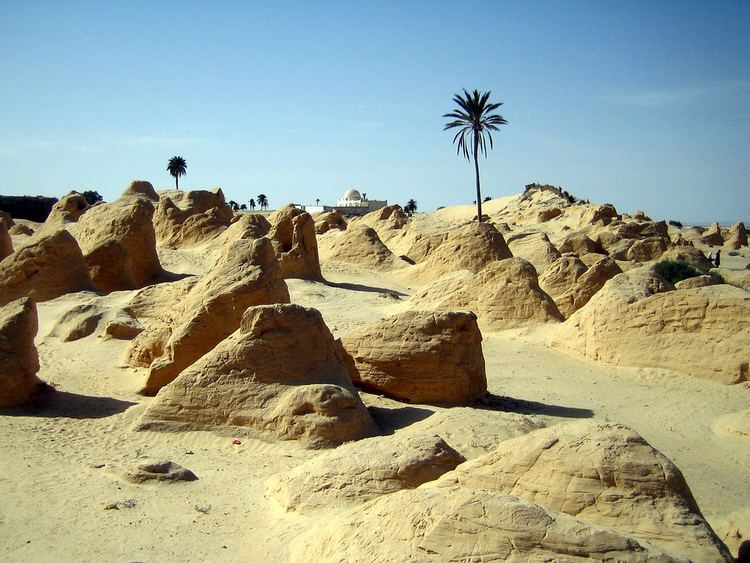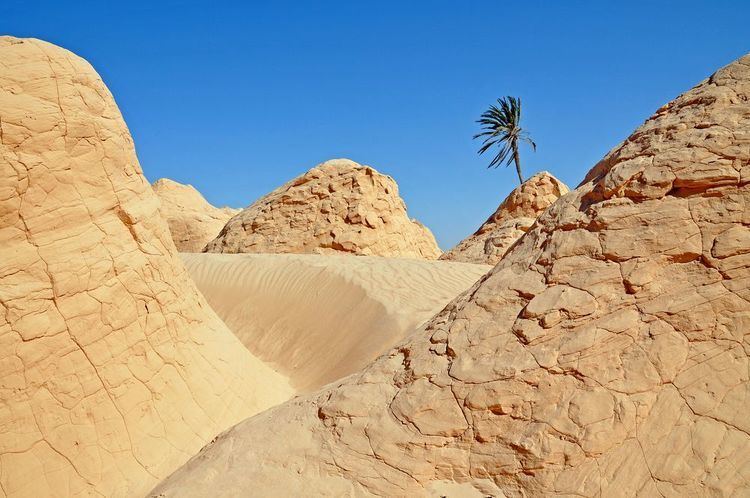Country | Governor Kebili | |
 | ||
Map of Kebili
Kebili (Arabic: ڨبلي Gbillī) is a town in the south of Tunisia and one of the main cities in the Nefzaoua region. It is located south of the Chott el-Jerid. It is the capital of the Kebili Governorate.
Contents
- Map of Kebili
- Kebili
- Short click clip of a tunisian wedding in kebili tunisia
- History
- Demographics
- Language and religion
- Economy
- Agriculture
- Tourism
- Climate
- References

Kebili
Short click clip of a tunisian wedding in kebili tunisia
History
Kebili is one of the oldest oases in Tunisia and North Africa. It holds the earliest hard evidence of human habitation in Tunisia (found near the town) and dates back about 200,000 years. Kebili, along with many other Tunisian cities, became part of the Roman Empire after the Punic Wars.
Demographics
Kebili's population is more diverse compared to other Tunisian governorates. The population traces its roots to three main groups:
Language and religion
While Arabic is the dominant language in the region, several differences set it apart from the Tunisian Arabic spoken elsewhere in the country. Most notably, the letter qāf ق is pronounced as a [g] rather than the guttural [q]. Additionally, some villages use the feminine plural pronouns antunna أنتن (plural you) and hunna هن (they). These pronouns are very rare throughout the Arab world and are usually replaced by their masculine counterparts antum أنتم and hum هم. Bedouin vocabulary and expressions have declined in usage among the new generations.
Islam is the dominant religion. Kebili, as many other Tunisian towns, holds a great number of Soofiat Maqams (Saleheen).
Economy
The economy of Kebili has seen diverse orientations throughout its history. Kebili was one of the main hubs of the African slavery trade to satisfy European needs. Slaves were taken to Europe through the port of Gabès. Nowadays, Kebili relies heavily on agriculture and tourism.
Agriculture
The main agricultural product in the region are dates or "deglets". Kebili produces a very high quality date, exported all around the world and contributing significantly to the local and national economy.
Tourism
Since national independence, the government of Tunisia has encouraged tourism projects and resorts in the Saharan region. Of these Douz, south of Kebili, is the most famous Saharian destination of Tunisia (known as the Sahara Gate).
Climate
Temperature records have been kept here from 1901–1939, 1949–1953, and 2000–2012. The French colonial authorities of the Service météorologique de Tunis maintained the older records. A portion of the original data logs for this early period is in the NCDC archives and at the POR of 1907 to 1932. Like Azizia, Kebili is subject to the foehn-like wind phenomena known as a Ghibili.
